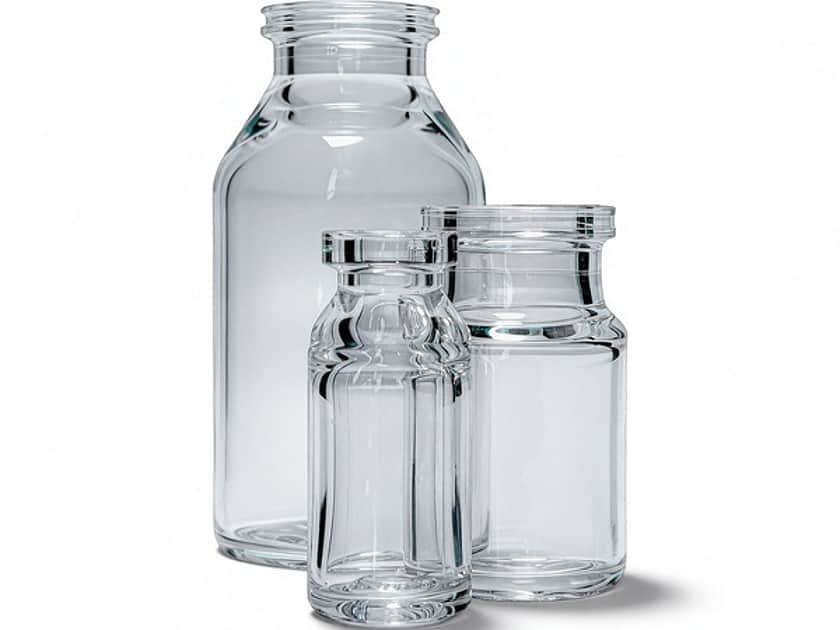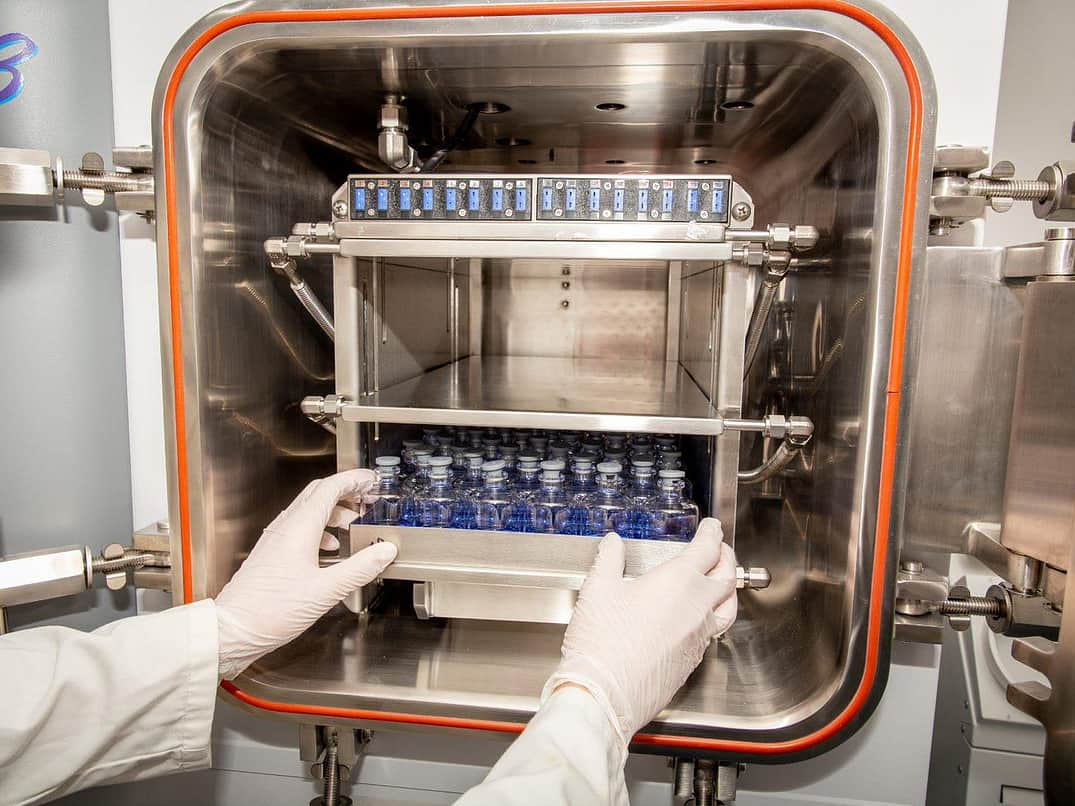“It doesn’t matter what type of glass vial I choose to do my freeze dry development work in, they are all suitable for holding pharmaceuticals - any one should be fine.”
Often at the start of a project people will look in their stores to see whether they have a container of about the right size and capacity for the project at hand, and just start with that.
This is not always a good idea……
What can be advisable is to consult a packaging supplier with the relevant experience to advise whether this is indeed an item that should be suitable for a freeze-dry application. Glass Type (if an injectable it needs to be Type I glass for example), method of manufacture, future availability, etc can all have an influence on whether it will actually be suitable.
Pharmaceutical glass vials are available in either Moulded or Tubular glass options. As a rule of thumb, smaller glass vials are more economical when made from tubular glass and large capacity vials are more economical in moulded glass due to the efficiencies in the respective production process involved in manufacturing the vials.
Tubular Glass Vials are converted from glass tubing where the wall thickness is controlled and the base shape can be optimised in the converting process into a container.
Moulded Glass Vials are made from pouring liquid glass into a mould that dictates the outside shape of the container, and the wall and base thickness is not easily controlled. If you look at a moulded glass vial alongside a tubular one, the sides of the moulded glass container will appear ‘marbled’ where the wall thickness varies. This is not visible with a tubular glass container. Therefore the tubular container will also be lighter.
When freeze drying, ideally you want as flat and as thin a base to the vial as possible. This will ensure optimal and consistent thermal transfer from the freeze dryer shelf. These are all attributes of tubular glass vials, which are available in 2ml - 100ml sizes.
Moulded glass vials can often have ribs around the edge of the base as well as a more concave bottom which means the base of the vial isn’t as close to the freeze dry shelf and so the product in the centre of the vial cools slower than the outsides. Additionally the base of moulded vials can be very thick, and also inconsistent in shape, meaning a variation as to how much liquid is near the freeze dry shelf and less than preferable heat-transfer. If the heat transfer takes longer, this can make the freeze dry cycle longer.
Longer freeze dry cycle = more time and more cost

“Any glass vial will do” – Part 2
If you are working on a product for injection, or for a diagnostic application, then it generally makes sense to do your development in a container that is both suitable for the product, and can also be used for commercial scale-up.
We have seen people do their development in a container that is not suitable for a pharma-application. They spend a lot of time and money trying to get the product stable and compatible with the material, and then a few years later they have come to commercialise the product only to find that they need to transfer to a glass or alternative polymer vial to meet the relevant Pharmacopeia. They then have to repeat many of the stability and validation runs to prove that the product is compatible with a different container and closure.
Revalidation takes time and money, and could allow a competitor to beat you to market
In the case of some common plastics, they can be permeable to oxygen and water-vapour whereas glass is not. There can be leachable / extractable issues on occasion too. This is less of an issue with some modern high-tech polymers - West’s CZ Vials for example.

“The liquid fill – either before lyophilisation, or after reconstitution - is very low (say 1ml or less) therefore I must use a really tiny vial”
Not necessarily. In fact this needs to be given very careful consideration.
Very small vials do exist (for the chromatography market for example), but just because you can buy them does not mean it is a good idea to use them for your application.
Just because you can buy tiny vials, it doesn't mean you should...
First of all, the production of a vial involves heat. To get the glass to a temperature where it can be formed into the shape of a vial, the heat involved is very high. This can negatively impact the surface of the glass if the process is not precisely controlled. With very small vials (below a nominal 2ml fill) there is less surface area for that heat to dissipate, and the quality of the inside surface of the vial can be degraded. In some cases it has been found very that small vials made from Type I glass, when subjected to surface quality testing (hydrolytic resistance testing), actually no longer conform to the Type I classification.
It is also worth thinking ahead - and a little laterally. As the project scales up:
- Who will have a filling machine that would fill such tiny vials, without special and possibly expensive change-parts?
- What about labelling of the vials? Is there a labelling machine that can apply labels to something so small, and will you be able to get enough information onto the label in a legible form to meet the needs of the customer?
- How easy will it be for someone to use the vials, and perhaps withdraw product with a syringe and needle without risking a needle-stick injury?
An ISO standard Type I glass vial of 2ml nominal capacity would generally be recommended as the smallest starting point. The quality of the surface would be expected to meet the necessary standard, filling companies are familiar with it, as are the stoppering systems on filling-lines.The labels and labelling machines are routinely working with this size, and fill volumes / reconstitution volumes of 200 microlitres are often packed into such vials without issue. Note that with lower fill volumes you might not achieve a freeze-dried ‘cake’, but rather a ‘halo’ of dry powder at the bottom of the vial.
If you have a concern about withdrawal of all of the drug from the vial, perhaps the drug product is of high value and you don’t want to put an excess of product into the vial to allow for the residual product that typically sticks to the surface of glass, then you might consider a vial that features a special hydrophobic internal coating, such as the EVERIC® lyo vial which has been designed specifically for lyophilisation.
Adelphi offers a free consultative service
Contact our friendly and experienced team to discuss your project in more detail.
Contact Us